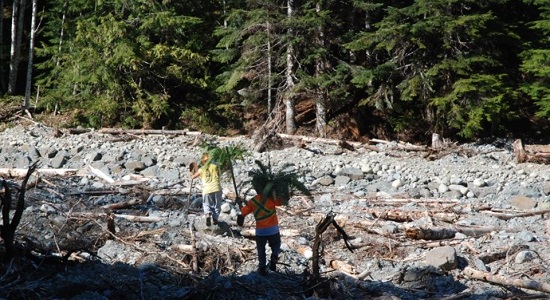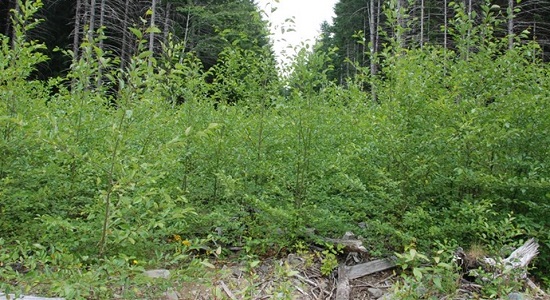
Restoration Using Natural Processes
 By 2012, the Heber Dam near Gold River, BC, had finally reached the end of its useful life after damming up the Heber River since 1953.
By 2012, the Heber Dam near Gold River, BC, had finally reached the end of its useful life after damming up the Heber River since 1953.
Before removing the dam and its associated contaminated materials, BC Hydro wanted to devise a plan to bring the Heber River back to its natural flow and conditions, while restoring the stream bank and surrounding area using natural processes as a model for recovery.
SER-WC Board member David Polster, a restoration ecologist for Polster Environmental Services Ltd., was called upon to develop the restoration plan, which he documented in a new research paper that provides in-depth descriptions and visual depictions of the regeneration process as it unfolded.
A key step in any restoration process, writes Polster in the report, is to identify the “filters” that prevent ecological recovery, such as soil compaction or erosion, and then consider ways of rectifying those filters. It’s also important, he adds, to identify functioning local ecosystems as models for reference.
After assessing the disturbed area around the dam, Polster decided to employ a “rough and loose” technique, which entails creating an array of mounds and holes covered up by woody debris to limit erosion and provide multiple sites for seed capture and growth.
The method offers a diversity of micro-sites for different species to get established—from dry areas at the tops of mounds to moist areas in the depressions—and closely mimics the regeneration process of a recovering forest ecosystem after natural disturbances, such as forest blow-down or fires.

In 2012, the project site was made “rough and loose” by creating mounds and depressions under a bed of woody debris, setting the stage for ecological recovery by increasing diversity of micro-sites.
By 2013, alders and other pioneer species had begun to green up the banks of the Heber River, and a local First Nations crew was hired to transplant sword ferns from the surrounding forest. Establishing alders on disturbed sites early in the process was very important, since they provide a deciduous cover to ensure that conifers grow well underneath.
The fast-growing alders provide shade during hot summers, transpiring moisture to create a cool, moist micro-environment, and in winter, they shed their leaves to offer more sunlight for conifers growing below. Transplanting the roughly 1,000 sword ferns was also very important, since they brought in other soil micro-organisms, which are essential to the development of a fully functional forest.

Members of the local Mowachaht/Muchalaht First Nation helped in the restoration work by transplanting sword ferns from adjacent forested areas.
In his report, Polster points out not just the ecological benefits of restoring the Heber river—an important west coast salmonid river—but also the cost savings of using natural processes. More than 84 different species now make the restored site home, which ensures a high degree of ecological resilience, and Polster estimates that purchasing and planting those species using traditional methods would have cost roughly $15,000/hectare.
The Heber Dam restoration effort and recovery process, he concludes, should serve as a template for restoring other significantly disturbed sites.

By July 2017, cover by fast-growing alders is obvious. None of these trees were planted—they grew naturally after the habitat was prepared using the rough and loose method that leads directly to their regeneration.
